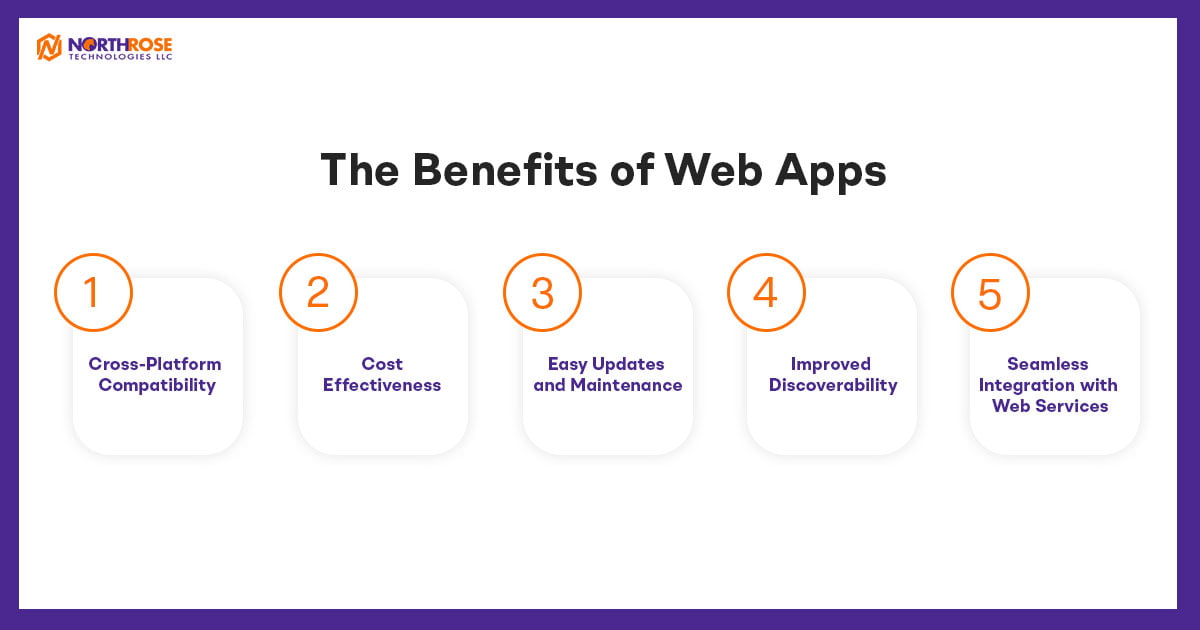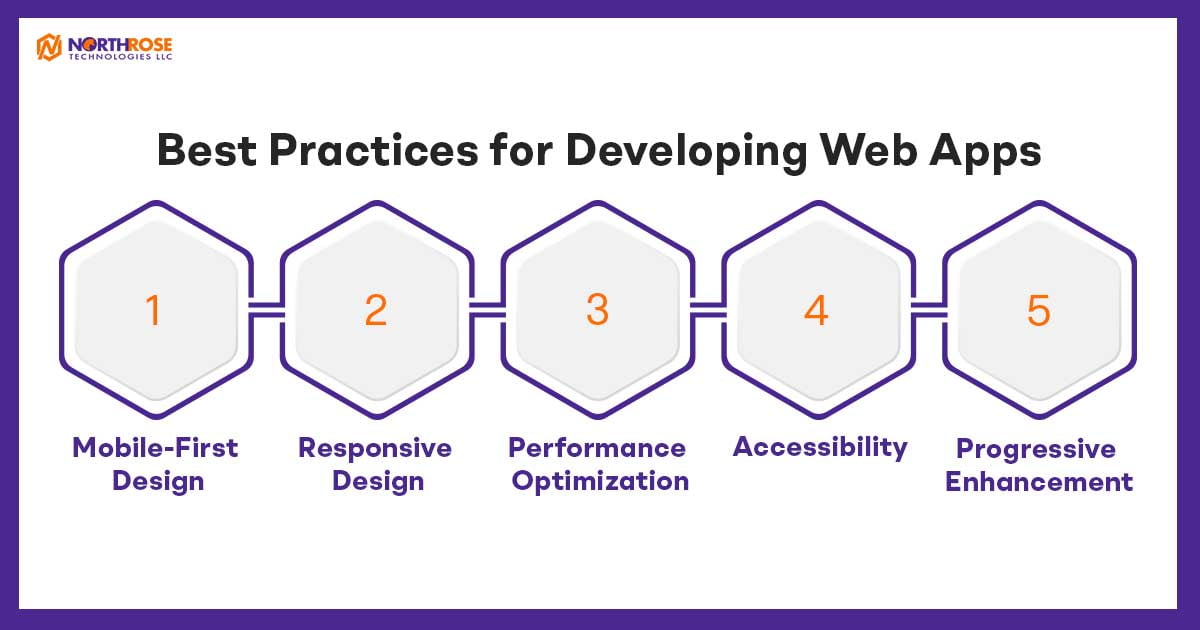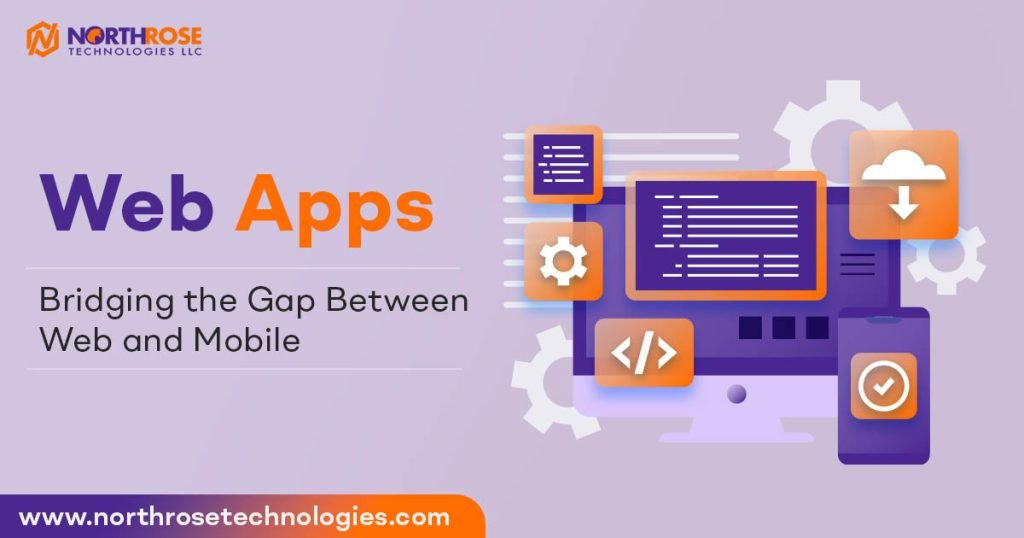Businesses are always looking for new and creative methods to interact with their clientele. The need for seamless cross-platform experiences is now greater than ever due to the widespread use of smartphones and the growing dependence on mobile devices for information and services.
Web apps have arisen as a potent answer to this need, bridging the gap between online and mobile platforms and providing businesses with an adaptable and economical way to connect with their target market.
What are Web Apps?
Software programs that can be accessed via a web browser across a network, such as the internet or an intranet, are known as web apps.
Web applications operate on distant servers and are accessed via a web browser interface, in contrast to traditional desktop applications, which are installed on a user’s device.
Web apps are incredibly flexible and accessible because of their architecture. It enables users to access the same application from any device that has a functional web browser.
How Do Web Apps Work?
Web apps provide a rich and dynamic user experience by combining several online technologies, such as HTML, CSS, and JavaScript.
When a user accesses a web app through their web browser, the browser sends a request to the web server hosting the application.
After processing the request, the server replies with the necessary JavaScript, HTML, and CSS code, which the browser then displays to show the web application interface.
Types of Web Apps
There are several types of web apps, each with its own unique characteristics and use cases:
- Static Web Apps: These web apps consist of static HTML pages and are primarily used for displaying information.
- Dynamic Web Apps: Dynamic web apps incorporate server-side processing to generate content dynamically in response to user requests.
- Progressive Web Apps (PWAs): PWAs are web apps that leverage modern web technologies to deliver an app-like experience, including offline functionality, push notifications, and home screen installation.
- Single Page Applications (SPAs): SPAs are web apps that load a single HTML page and dynamically update the content as the user interacts with the app, offering a seamless and responsive user experience.
The Benefits of Web Apps

1) Cross-Platform Compatibility
The cross-platform connectivity of web programs is one of their main benefits. Web apps can operate on any device with a compatible browser, including desktops, laptops, tablets, and smartphones as they are accessed through a web browser. This lowers development time and costs for businesses by enabling them to access a wider audience without the need to create individual apps for each platform.
2) Cost-Effectiveness
Web app development tends to be less expensive than native mobile app development, which calls for different codebases for the iOS and Android platforms. Businesses can reduce development and maintenance expenses while maintaining a consistent user experience by using a single codebase that is accessible across several platforms.
3) Easy Updates and Maintenance
The simplicity of updating and maintaining web apps is another plus. Updates can be centrally deployed for web apps, eliminating the need for users to download and install updates manually, as they are housed on remote servers. By doing this, it is made sure that users always have access to the most recent version of the program, which includes seamlessly integrated bug fixes and new features.
4) Improved Discoverability
Since web apps can be found using search engines or accessed directly through a computer browser, they are inherently discoverable. This can help businesses reach a wider audience and attract new customers who may not have been aware of their products or services otherwise.
5) Seamless Integration with Web Services
Businesses can use third-party services and pre-existing infrastructure to improve the functionality of their web apps by integrating them with a variety of web services and APIs with ease. Web apps provide unmatched flexibility and interoperability, whether integrating with social media platforms for content sharing or connecting to payment gateways for e-commerce applications.
Challenges and Considerations
1) Performance Limitations
Performance issues with web apps are a major worry, particularly for mobile devices with limited bandwidth and processing capacity. Network latency and bandwidth limitations can impact web apps’ performance because they depend on an internet connection to reach remote servers. This can result in slower load times and decreased responsiveness.
2) Offline Functionality
Although progressive web apps (PWAs) offer offline functionality through service workers and caching mechanisms, achieving seamless offline experiences can still be challenging, especially in scenarios where users have limited or intermittent internet connectivity. While PWAs can cache static assets and data for offline use, dynamic content, and transactions may still require an active internet connection, limiting the effectiveness of offline functionality in certain use cases.
3) Security Considerations
Another crucial factor for web apps is security, particularly for those that manage sensitive user data or enable transactions. Web applications are intrinsically susceptible to security risks including man-in-the-middle (MITM) attacks, cross-site scripting (XSS), and cross-site request forgery (CSRF) since they are accessed through the internet. Protecting user data and upholding app trust requires putting strong security mechanisms in place, such as HTTPS encryption, input validation, and user authentication.
4) Device Compatibility
Web app developers may find it difficult to ensure compatibility across several browsers and devices since different browsers and devices may interpret web technologies differently. Even while cross-browser compatibility has significantly improved thanks to new web standards, developers may still run into problems with outdated browsers or non-standard implementations, necessitating more testing and optimization to guarantee a consistent user experience across all platforms.
5) App Store Distribution
Website hosting and direct URLs are the means of distribution for web apps, as opposed to native mobile apps, which can be made available through app stores like the Google Play Store and Apple App Store. Although this does away with the requirement for app store approval procedures and revenue sharing with app store providers, it also implies that web apps might not be as visible as their native versions, necessitating marketing and promotion expenditures on the part of companies to get people to their web app.
Best Practices for Developing Web Apps

1) Mobile-First Design
It’s important to design web apps with a mobile-first mindset, giving the user experience on mobile devices priority and scaling up for larger screens. This guarantees that the application maintains its functionality and accessibility on a broad spectrum of devices, encompassing desktop computers and smartphones, and offers a uniform user experience independent of screen dimensions or input modalities.
2) Responsive Design
A fundamental tenet of web app development is responsive design, which guarantees that the information and layout of the app adjust dynamically to the user’s device and screen size. Developers no longer need to create distinct mobile and desktop versions of their apps because they can design web apps that look and function great on any platform by utilizing media queries, fluid grids, and flexible graphics.
3) Performance Optimization
Performance optimization is essential for providing a quick and responsive user experience, particularly on resource-constrained mobile devices. By reducing the number of HTTP requests made, optimizing multimedia and pictures, and utilizing browser caching and compression strategies to lower bandwidth consumption and load times, developers may enhance performance.
4) Accessibility
For web programs to be useable by those with disabilities—such as those with visual, hearing, motor, or cognitive impairments—web accessibility is crucial. Developers can make their online apps more inclusive and accessible to all users by adhering to accessibility best practices, which include utilizing semantic HTML, offering alternative text for images, and integrating keyboard navigation and attention management.
5) Progressive Enhancement
According to the development technique known as “progressive enhancement,” the user experience is gradually improved for devices and browsers that support advanced capabilities once a foundation of basic functionality is implemented that functions on all platforms and devices and browsers. With this strategy, consumers with contemporary devices and browsers may still enjoy expanded features and experiences while ensuring that all users have access to fundamental functionality.
In conclusion, web apps have emerged as a powerful solution for bridging the gap between web and mobile platforms, offering businesses a versatile and cost-effective means of reaching their target audience.
While web apps offer many benefits, they also come with their own set of challenges, such as performance limitations, security considerations, and device compatibility issues.
As the demand for seamless cross-platform experiences continues to grow, web apps will play an increasingly important role in helping businesses connect with their customers and stay ahead of the competition in today’s digital marketplace.
By embracing web app development and leveraging the latest web technologies, businesses can unlock new opportunities for growth and success in the ever-evolving world of digital marketing. Connect with the experts at North Rose Technologies to learn more about how to use this to your advantage.




